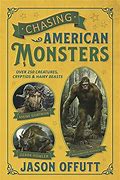Understanding the Community: MJ Banias’ The UFO People
At first glance, you could be forgiven for assuming that MJ Banias’ book The UFO People: A Curious Culture is a light, breezy look at the UFO community and how it’s changed over the years. After all, there are chapters entitled “Haunted Manitoba” and “The Ghost of Richard Doty.” The cover sports a photo of J. Allen Hynek standing in front of a hotel sign with the message “Welcome UFO People.” However, as Willie Dixon memorably sang, “You can’t judge a book by looking at its cover.”
While Banias does look at some historical aspects of the UFO community, this book isn’t made for the light reader. Rather, this is an in-depth study not so much of the community, but of how the community engages with the UFO phenomenon. Using the writings of French philosopher and critic Jacque Derrida as his starting point, the author first presents the UFO community to us (the first half of the book comprises a look at a handful of cases and how they may apply to the phenomenon as a whole), then uses the second half of the book to deconstruct the UFO community—not with an eye to debunk, but to examine and understand. While the first half actually could be read as a run-of-the-mill UFO book (albeit an incredibly intelligent one), the second half, in which Banias truly dives into his examination, is where the value of this book lies.
One of the key points that Banias makes throughout this study is that the experiencer (and by extension, the larger community) shapes the phenomena. That is, the experiencer’s thoughts, beliefs, expectations, etc., are fundamental in shaping the UFO phenomenon into what it is. This has echoes in both the quantum realm (the double-slit experiment) and the works of Jacques Valee, among others. In other words, even as the UFO community is dependent on the UFO phenomenon, the UFO phenomenon is equally dependent on the UFO community. It’s heady stuff.
As heady as it is, though, it’s never confusing. While Banias writes with an academic tone (especially in the second half of the book), it never feels dry or pedantic. Nor is he talking down to the reader. This is the work of a man genuinely interested in the phenomenon and the community that has developed around it, a community of outsiders with a vast range in belief systems. This is a serious book for serious people, but Banias isn’t lecturing us. Rather, he’s opening up a whole new angle of conversation for those of us interested not just in UFOs, but of the effect they have upon society, especially the UFO community. He also provides us with a handful of essays by credible witnesses and UFO researchers.
This is wonderful stuff for anyone that wants to engage not only with UFOs, but in the understanding of the subculture that has grown up around them, whatever they may be. Highly recommended. 5 out of 5 Armchairs
UP NEXT: The Five: The Untold Lives of the Women Killed by Jack the Ripper, by Hallie Rubenhold





4 Comments
Barb
Similar to transactional theory–how readers’ perceptions influence understanding of the text?
The Armchair Fortean
Exactly so…only in this case, the text is the phenomenon itself, which relates back to the experiencer, influencing shifts in their perception, and so on. It’s a causal loop. (At least, that’s my understanding.)
Barb
I feel that perception (and unconscious bias) is often disregarded — to the witness’ peril. This sound like an interesting book.
The Armchair Fortean
It is. I highly recommend it. (The cover photo takes you to Amazon, if you’re interested.) –Quick disclaimer–the book cover links are affiliate links to Amazon.